Brendan Shanahan has now hired and let go of Lamoriello and Mike Babcock in his time as Toronto Maple Leafs President.
Let that sink in for a second. That’s two current or future Hall of Famers he shocked the hockey world by successfully recruiting to Toronto, who helped him return the franchise to respectability (from last place to 100+ points) and who were were then let go by Shanahan before the franchise won a single playoff series. Opting for Dubas and Keefe over Lamoriello and Babcock has the potential to go down as the spectacularly-bold stroke that put Shanahan’s presidency on the right side of hockey history, or one of its most staggering ever faceplants. Whether you are invested in it or not as a fan of the organization, it’s high drama and one hell of a story.
Some scattered next-day thoughts on the end of Babcock’s tenure and the beginning of the Sheldon Keefe era, in no particular order:
- Bob McKenzie said this on the radio yesterday afternoon: “They’re not predisposed to want to do this. There was this narrative at the beginning of the year that Dubas was going to wait for the very first chance to get rid of Mike Babcock and bring up Sheldon Keefe.”
I
For once, Bobby Mac was a little off the mark. It wasn’t the “first chance,” but it was the second chance. The first was after Game 7, but it probably would’ve been a tough sell to pass up the ladder through Shanahan and ownership at that time. Who knows if Dubas wanted to do it and if it got overruled after the 2019 playoff exit, but this 9-10-4 start was clearly the final straw. They didn’t even give him the rest of this road trip, which suggests to me it wasn’t just the 9-10-4 start but rather a culmination of the under-performance in the calendar year 2019 as well as Dubas’ desire to have his guy behind the bench all along (Babcock seemed to suggest he felt that was the case with his comment after the firing: “GMs should hire their own coach.”) As it turns out, the Babcock-Dubas forced marriage only lasted a year and a half. - I said on Twitter after the Pittsburgh loss that I thought firing Babcock would be a bad message to send at that time — a number of players on the team were likely fed up with the coach, but that’s not an excuse to go and lay an egg in front of a debuting goaltender like that. Be a professional and show some pride. That was pathetic and should not be excused. I am guessing the decision was more or less made after that loss, but the team didn’t want to give off the impression it was all on the coach and totally let the players off the hook, so they waited for at least one more game. But Babcock is gone, and at a minimum, we’re going to see how the team performs with the excuse of a coach they’ve tuned out now removed.
- A couple of telltale signs of a soon-to-be fired coach: a moment in which he admits he doesn’t know how to fix the problem (in this case, “I’ll try to figure it out on the plane” after the Pittsburgh loss) and then what seemed to be a subtle shot at management about the lack of practice time spent on the PK due to the sports science considerations. I could be reading too far into it, but it’s possible Babcock wanted more practice time early in the year when the team was mixing in rest days amid the busy start to the schedule — the roster being shaken up and the PK units being totally overhauled over the summer, it’s not like he wouldn’t have had a leg to stand on here. Babcock always kind of played a tongue-in-cheek game in the media when it came to his lack of understanding of why and how the sports science team made the recommendations it did. It could’ve just been Babcock’s sense of humour, but it was hard to kick the sense there was likely some tension there at various points.
- I’ll preface this by saying it’s all outside speculation, but it comes from the intuition of following this team every single day during the Babcock era. I had a trusted confidant who sat directly behind the bench at a couple of Leafs games (tough losses) and was struck by the younger players looking like they wanted to “hide” from Babcock and how much the coach leaned on Hainsey and Marleau at the time. This was a few years ago now (2017-18), and the young core was more new to the league then, so the dynamic could’ve changed as the young core gained a little more confidence in themselves as players and professionals at the NHL level. Babcock mentioned Rielly and Tavares coming to him and meeting with him shortly before he was fired after the Pittsburgh debacle — conspicuous in his absence there is the other assistant captain in Matthews (while Marner would’ve been at home rehabbing). There is a legitimate question to be asked as to whether Babcock was getting through to the younger core players in particular. Relevant: That young core has now been all signed to contracts more lucrative and lengthy than Babcock’s was.
- The other possible sign something was a little off with this group behind the scenes: Babcock kept referencing how they are still working on becoming a tight-knit group more than a month and a half into the season. I get there were notable off-season changes and new people take time to bond together, but you wonder how the dynamic shifted on him when he lost Marleau and Hainsey. It’s not like the core really changed.
- Babcock has talked about evolving to understand/relate to today’s generation more and how helpful his own children are toward that end, and I find him to be an impressive person when it comes to his desire to adapt and evolve with the times. But it doesn’t change that he’s been coaching veteran teams in the NHL for large swaths of the last couple decades. This is where it will be interesting to watch how the team responds now to someone who is perceived as more of a player’s coach in Keefe, who isn’t far removed from the OHL, has coached a number of these younger Leafs at some point, and is theoretically more in touch with today’s young 20s professional hockey player. He’s coached a number of these players before, too, and will know exactly where newcomers like Engvall and Timashov’s strengths and weaknesses lie along with a good familiarity with players like Justin Holl, Travis Dermott, Kasperi Kapanen, Andreas Johnsson, Frederik Gauthier, and William Nylander from the past.
I
I tend to put more weight into the players he’s impacted and helped develop successfully than the overall team success, though it is definitely still important — it’s just that the Marlies are NHL-lite in terms of their player talent and resources, and there is no need to sell superstar egos on your program when they’re in the AHL. It’s night and day in terms of the challenges involved, but the communication skills, relationship-building, understanding of player development, and attention to detail aspects should theoretically do him well. The same message stated differently via a new voice and a person you have a strong, trusting relationship with can definitely go a long way. - Every fired coach takes the blunt of the blame unfairly to some extent. In this case, the Leafs depth and penalty kill was certainly under-served by the offseason Dubas had, and the injury trouble also contributed to him losing job much earlier in the year than ever anticipated. The cap issues handcuffed Dubas’ ability to add quality depth Cs and forwards who could complement the forward group with notable experience, penalty killing ability, and physicality. On his top pairing, Babcock lost one of his trusted veterans in Hainsey and saw him replaced by a more defensively-flawed stopgap in Cody Ceci. The Tyson Barrie situation is one no one could’ve anticipated (and it’s not as simple as Barrie going without PP1 time). A fairly one-dimensional but high-octane offensive team has looked less high-octane, more one-dimensional, and even more defensively-flawed this year (and terrible on special teams). Unquestionably, some of that is down to the roster construction.
I
Some of it is Babcock never really succeeding in getting this team to buy in and check as he wanted — save for a period in November last season when Auston Matthews went down to injury and a decent chunk of the Bruins series last Spring. Some of it is also injuries and inconsistent goaltending. There is this idea out there that Keefe is going to make the Leafs play more “Dubas-y,” but the reality is that Babcock wasn’t totally wrong about the style of hockey the Leafs are going to need to be able to play and win with to pass the test of four rounds at playoff time. There are serious question marks as to whether this team as it is built today has it in them. - It will fascinating to see the new ideas and adjustments that take place within the systems under Keefe, as well as the the changes to deployment, line combinations, and ice time. Possibilities that never existed under Babcock could be at least experimented with in terms of loading lines and new line combinations. When injuries stirke down the middle, how does he view Nylander’s credibility as a center, having used him there in the AHL? Does he like Hyman back next to Matthews versus stapled to Tavares’ hip? Would he like to try out Nylander on Tavares’ wing? When Marner is healthy, does he see Matthews-Marner as the NHL version of his Mueller-Bracco? That’s an imperfect analogy, and frankly a dumb way to say it given the difference in the talents and the AHL vs. NHL levels, but you get the point. We’ll find out more about this team in the process, and given it seemingly reached the point where the team had gone as far as it could under Babcock, there is a lot of value in undergoing that process.
- That applies to both the player group and the overall Dubas vision/hypothesis that a team can be constructed this way and actually win — we’re now going to find out for real because there is now a total cohesion between the coaching staff and front office, or at least as much as there can be without Dubas coaching the team himself.



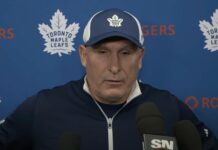
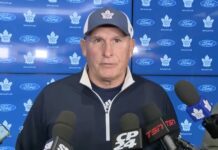
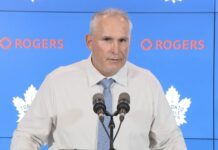

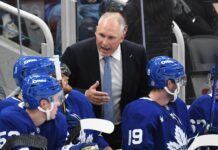



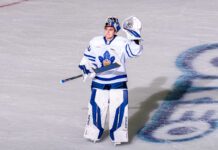
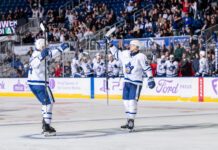

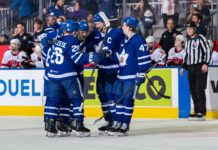








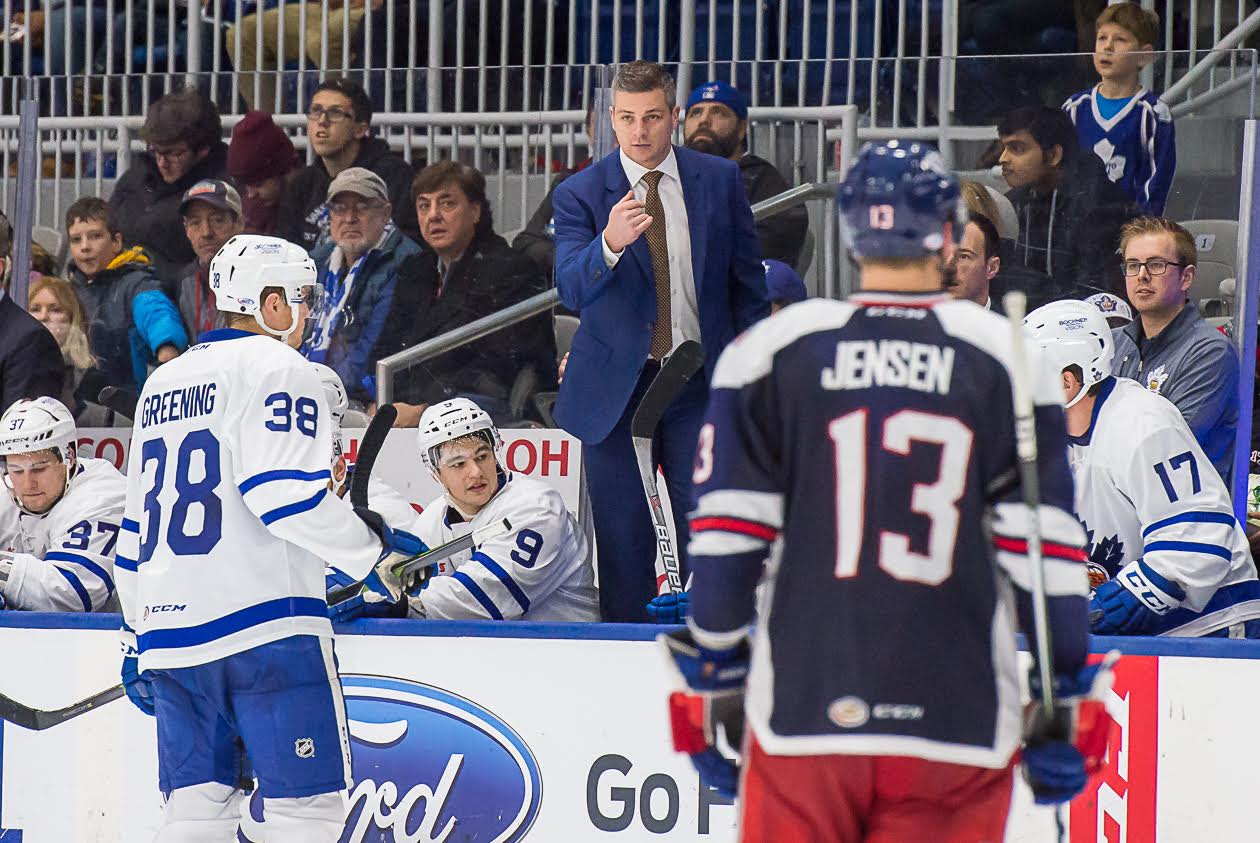









![Craig Berube on Nick Robertson joining William Nylander’s line: “If he gets to a good area on the ice, [Nylander] can find him… He has to put a couple in and get some confidence” Craig Berube, Toronto Maple Leafs head coach](https://mapleleafshotstove.com/wp-content/uploads/2024/10/berube-leafs-prac-100x70.jpg)